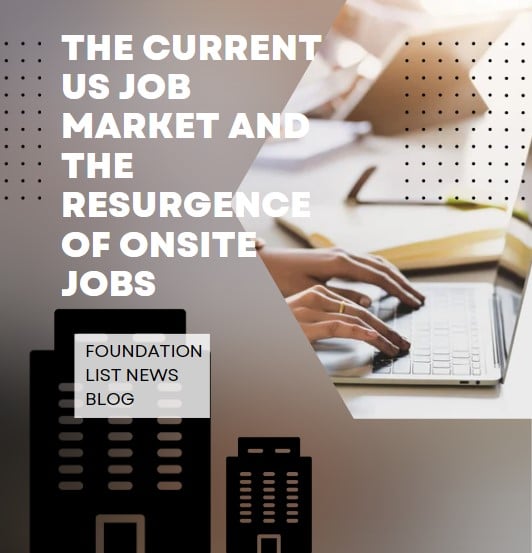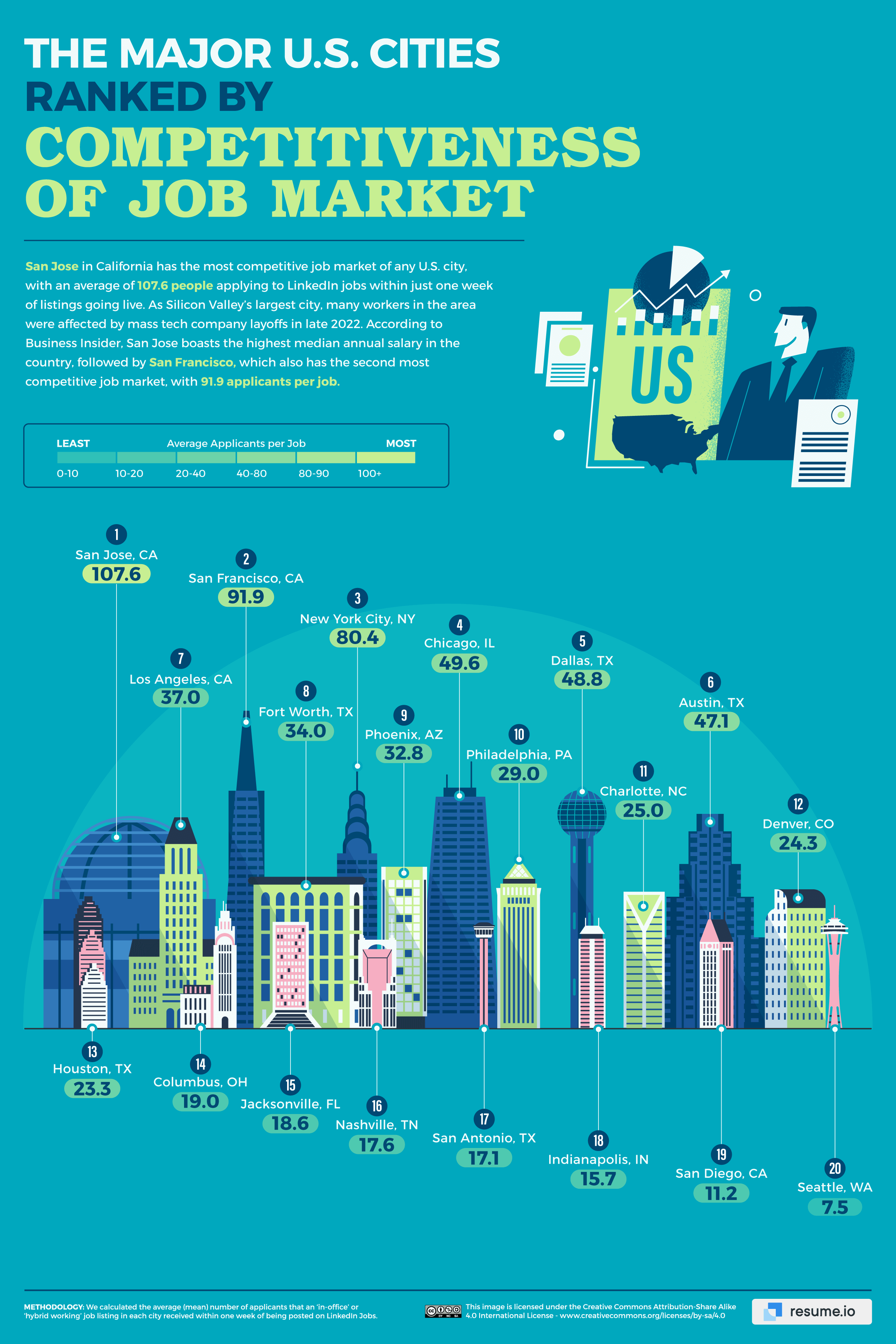Navigating the American Job Market: A Guide for Foreign Workers
Related Articles: Navigating the American Job Market: A Guide for Foreign Workers
Introduction
In this auspicious occasion, we are delighted to delve into the intriguing topic related to Navigating the American Job Market: A Guide for Foreign Workers. Let’s weave interesting information and offer fresh perspectives to the readers.
Table of Content
Navigating the American Job Market: A Guide for Foreign Workers

The United States, with its robust economy and diverse industries, has long attracted individuals from around the globe seeking professional opportunities. However, navigating the American job market as a foreigner can be complex, requiring careful planning, strategic preparation, and a deep understanding of the legal and cultural nuances. This article aims to provide a comprehensive overview of the job landscape for foreign workers in the United States, exploring various sectors, visa requirements, and essential tips for success.
Understanding the Landscape: A Diverse Array of Opportunities
The United States boasts a wide range of industries, from technology and finance to healthcare and hospitality, offering a diverse spectrum of employment opportunities for foreign workers. While some sectors are more receptive to foreign talent than others, it is crucial to understand the specific requirements and challenges within each industry.
1. Technology: The Engine of Innovation
The technology sector, with its rapid growth and constant innovation, presents a significant opportunity for foreign workers. The demand for skilled professionals in areas like software development, data science, cybersecurity, and artificial intelligence remains high. Companies in Silicon Valley and other tech hubs actively seek international talent to contribute to their projects.
2. Healthcare: Addressing a Growing Need
The aging population and increasing healthcare needs in the United States have created a substantial demand for medical professionals. Foreign-trained doctors, nurses, pharmacists, and other healthcare workers are often in high demand, particularly in rural areas and underserved communities.
3. Finance and Business: Global Connections
The financial sector, with its global reach and diverse operations, welcomes foreign professionals with specialized skills in investment banking, financial analysis, risk management, and accounting. International experience and multilingual abilities are often highly valued in this field.
4. Hospitality and Tourism: Serving a Growing Industry
The hospitality and tourism industry, a significant contributor to the U.S. economy, offers opportunities for foreign workers in various roles, including hotel management, restaurant service, event planning, and tourism management. Language skills and cultural awareness are often essential for success in these positions.
5. Education: Shaping Young Minds
The education sector, from kindergarten to higher education, presents opportunities for foreign educators with specialized skills in teaching, curriculum development, and educational research. Universities and schools often seek international faculty to diversify their academic offerings and enhance student experiences.
The Visa Landscape: Navigating the Legal Framework
Gaining legal authorization to work in the United States is a crucial step for foreign workers. Understanding the various visa categories and their specific requirements is essential.
1. H-1B Visa: For Specialized Professionals
The H-1B visa is the most common visa category for foreign workers in specialized occupations requiring a bachelor’s degree or equivalent. This visa category is often sought after by tech companies, universities, and research institutions.
2. L-1 Visa: For Intracompany Transfers
The L-1 visa allows companies to transfer qualified employees from their foreign offices to U.S. locations. This visa category is typically used for executives, managers, and specialized knowledge workers.
3. J-1 Visa: For Educational and Cultural Exchange
The J-1 visa is designed for individuals participating in educational and cultural exchange programs, including teaching, research, and internships. This visa category is often used by foreign students and professionals seeking temporary work experience in the United States.
4. O-1 Visa: For Individuals with Extraordinary Abilities
The O-1 visa is reserved for individuals with extraordinary abilities in the sciences, arts, education, business, or athletics. This visa category is often sought after by renowned artists, researchers, and entrepreneurs.
5. E-2 Visa: For Treaty Investors
The E-2 visa allows citizens of certain countries to invest in and operate a U.S. business. This visa category is often used by entrepreneurs seeking to establish a presence in the United States.
Navigating the Challenges: Overcoming Obstacles
While the United States offers numerous opportunities for foreign workers, navigating the job market can present unique challenges.
1. Visa Requirements and Processing Time: Obtaining a work visa can be a lengthy and complex process, requiring extensive documentation and potential delays.
2. Cultural Differences and Communication: Adapting to a new culture and communication styles can be challenging, requiring cultural sensitivity and effective communication skills.
3. Competition and Discrimination: The job market can be competitive, and some employers may have implicit biases against foreign workers.
4. Cost of Living and Housing: The cost of living in major U.S. cities can be high, making it challenging for foreign workers to adjust financially.
5. Language Barriers: While English is the primary language in the United States, language barriers can hinder career advancement and social integration.
Tips for Success: Strategies for a Smooth Transition
To navigate these challenges and maximize opportunities, foreign workers should adopt a strategic approach:
1. Research Thoroughly: Conduct comprehensive research on the specific industries and job markets of interest. Understand the visa requirements, cultural nuances, and industry trends.
2. Network Extensively: Build a strong professional network through online platforms, industry events, and professional organizations. Attend networking events and connect with individuals in your field.
3. Tailor Your Resume and Cover Letter: Customize your resume and cover letter to highlight relevant skills and experience that align with the specific job requirements and the American job market.
4. Practice Your English Skills: Enhance your English language proficiency through language courses, online resources, and immersion programs.
5. Seek Guidance from Professionals: Consult with immigration lawyers, career counselors, and recruitment agencies specializing in assisting foreign workers.
6. Embrace Cultural Differences: Be open to learning about American culture and adapting to local customs. Develop cultural sensitivity and communication skills.
7. Stay Informed and Adaptable: Stay abreast of changes in visa regulations, industry trends, and job market dynamics. Be flexible and adaptable to new challenges and opportunities.
Conclusion: A Promising Path for Foreign Workers
The United States continues to be a beacon of opportunity for foreign workers seeking professional growth and a fulfilling career. While navigating the job market can present challenges, the potential rewards are significant. By understanding the visa landscape, embracing cultural differences, and adopting strategic approaches, foreign workers can unlock the vast opportunities available in the American job market and contribute to the nation’s economic and cultural landscape.








Closure
Thus, we hope this article has provided valuable insights into Navigating the American Job Market: A Guide for Foreign Workers. We thank you for taking the time to read this article. See you in our next article!
